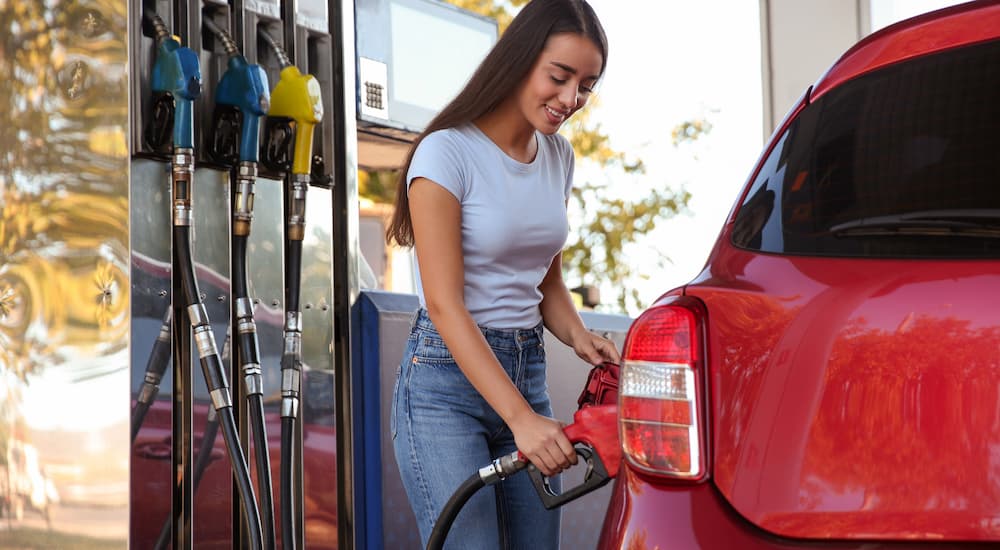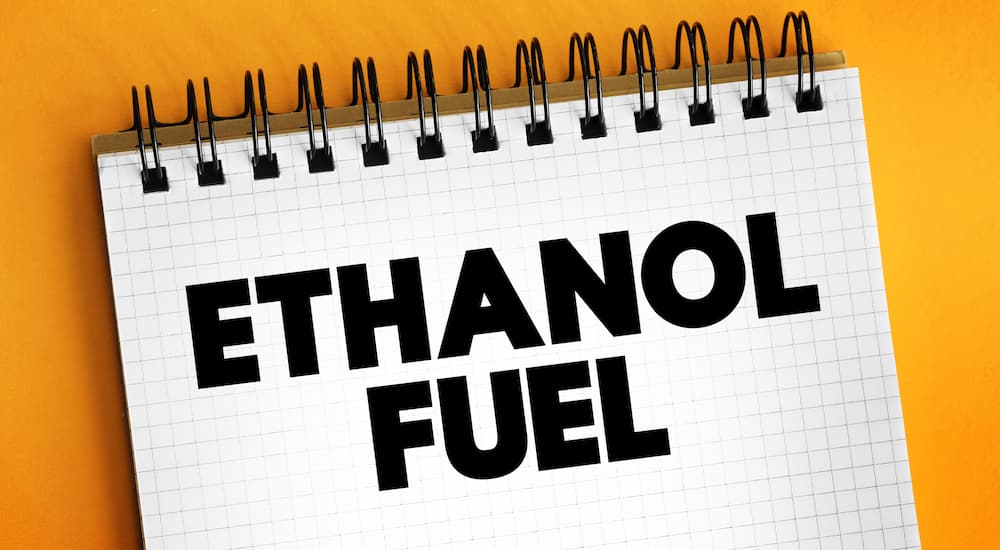If you’ve been shopping around on the websites between one used car dealership to another, you might have noticed one category filter you didn’t recognize: flex fuel vehicles. Flex fuel vehicles are not new to the world of automobiles. In fact, they’ve been around for almost 30 years now and there are well over 20 million on the road. They come in nearly every body type and style; however, they aren’t discussed as much as hybrid or electric vehicles. The recent surge in interest in going greener with vehicles has sent many drivers to the most fuel-efficient cars; those that don’t use fuel at all. However, those who aren’t ready to walk away from the gas pump forever or who live somewhere where charging stations are still few and far between should consider a flex fuel vehicle if they are trying to be more environmentally friendly.
Flex fuel vehicles, also known as alternative fuel vehicles (AFVs), can run on gasoline but can also use a combination of regular gas and ethanol. So, they’re flexible, hence the name. They contain engines specifically designed to be able to operate with either type of fuel. Other than that, they’re very similar to regular gas-guzzling cars, so they can be a nice transitional vehicle for those moving from fully gas-dependent cars into a greener space. Here are some things to know about flex fuel vehicles.
You Might Already Have One
Many people drive a flex fuel vehicle and don’t even realize it. There’s almost no discernible difference between a regular gas vehicle and a flex fuel vehicle, but if you want to check to see if you have one, check the gas gap. Flex fuel vehicles often have either yellow gas caps or yellow rings inside the gas cap. Additionally, if you look inside the small door you open to access your gas tank, you should find a label indicating what fuel the vehicle takes. It will tell you if it takes alternative fuel.
They’re Green(er)
The greenest car you can get will be an electric vehicle that burns no fuel whatsoever. However, the next best thing besides a hybrid is a flex fuel vehicle. That’s because these run on a certain percentage of ethanol (between 10 and 85 percent) and ethanol burns cleaner than gas, making it better for the environment. Furthermore, ethanol itself is sustainably produced. It’s made using sugar and corn, and using more of this means the US could rely less on foreign oil supplies.
There are two downsides to the ingredients in ethanol: 1) there are strict regulations stating that crops designated for ethanol production cannot be used for anything else, which could increase the cost of these same crops destined for our plates, and 2) corn is vulnerable to drought, floods, and other weather issues.

They’re Versatile
Just as its name promises, a flex fuel vehicle can operate on regular gasoline, as well as a variety of proportions of ethanol and gasoline. It contains smart sensors that detect what the current proportions are and make adjustments to fuel injections and timing accordingly. When you can’t find a gas station that offers flex fuel, you can just use regular gasoline, so you won’t find yourself unable to fuel your vehicle.
They’re Easy To Fill Up
Currently, over 4,000 gas stations are offering flex fuel in the US and Canada, and many major names you know carry it. The US Department of Energy offers an interactive map on its website to help you find alternative fuel providers in the US and Canada. However, you will notice instantly on the map that there are far more charging stations for electric vehicles than there are stations carrying alternative fuel. Again, this is a good type of car for someone who eventually plans on going hybrid or electric, as it appears that the world is moving more in the EV direction.
They Accelerate Better
Some car experts state that ethanol offers performance enhancements like better acceleration, torque, and horsepower. This is because ethanol boasts a higher octane number than regular gasoline, giving it more power. So if you aren’t on board with flex fuel vehicles for the eco-friendly perks alone, maybe the thrill offered by these cars can pique your interest.
There is another downside to these vehicles: ethanol is like a magnet for dust and dirt, which means it can lead to earlier deterioration of your engine than a regular gasoline engine. However, taking good care of your car and keeping up with regular maintenance can help prevent or slow down this problem.
There’s Some Tax Advantages to Owning One
In the future, people can expect significant tax breaks if they opt for a new alternative fuel vehicle or transform a current one to operate on alternative fuel. In fact, some people can see credits for up to $50,000 of the cost of purchasing a new original equipment manufacturer AFV or converting a vehicle to be an AFV. The size of the credit varies depending on the size of the vehicle.
The Great Mileage Debate
Experts can’t decide whether flex fuel vehicles or regular gasoline vehicles get better mileage. You’ll need to explore options and compare the gas vehicles you want to the AFVs you want. There doesn’t appear to be a major difference in fuel economy overall between the two types of cars. Additionally, whether or not flex fuel is more affordable is also debated. On the one hand, ethanol is usually less expensive per gallon than regular gasoline; however, some experts state that AFVs get anywhere from 15 to 27 percent fewer miles per gallon when running on ethanol than gasoline, so the cost benefits might cancel each other out.
There Are More Flex Fuel Vehicles Than You May Realize
If you’re worried that shopping for a flex fuel vehicle will limit your brand possibilities, that shouldn’t be a concern. Audi, Nissan, VW, Mercedes, and Toyota all make flex fuel vehicles, as do Chevrolet, Ford, and other top names. Today, there are so many options beyond a regular gas-guzzling vehicle. Between hybrids, EVs and AFVs, you have an abundance of choices if you’re trying to move away from using pure gasoline. Not everyone is ready to make the complete switch to an electric vehicle or even to a hybrid. If you aren’t prepared to give up the days of fueling up at the pump but want to buy a car that’s easier on the environment, a flex fuel vehicle can be a great way to go.
These cars can be found at great prices, especially used, and can experience improved power compared to gas cars. Plus, with thousands of flex fuel stations in the US, it won’t be too hard to run on a strong ethanol mix. When you can’t find a station offering it, you can simply use regular gas. These cars live up to their name when it comes to being flexible. As the world looks for more ways to use less gasoline and break away from its oil dependence, purchasing an AFV can be a part of those efforts. Ask your local used car dealership if they have flex fuel vehicles available next time you’re on the hunt for a great deal.





